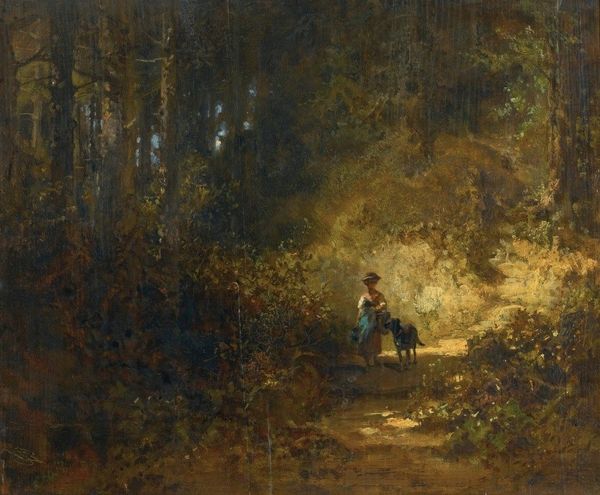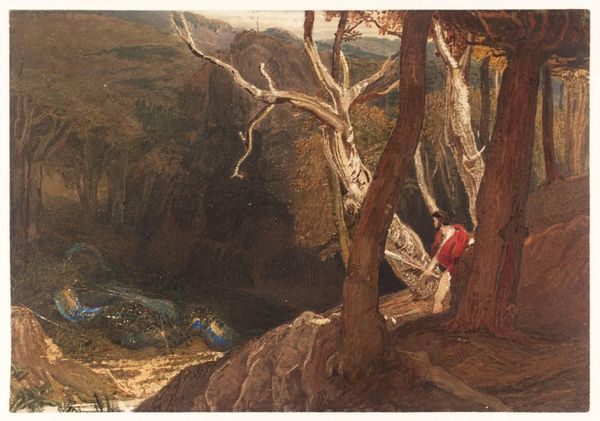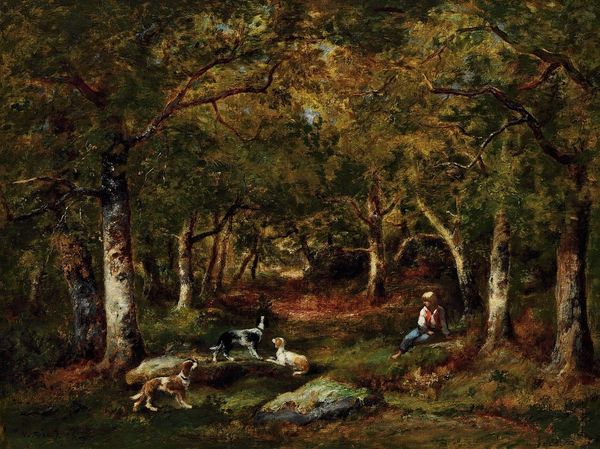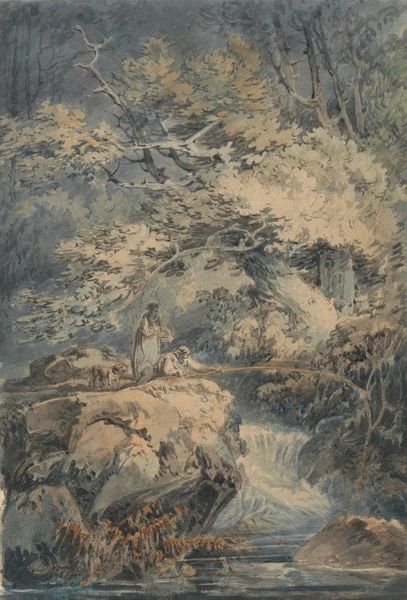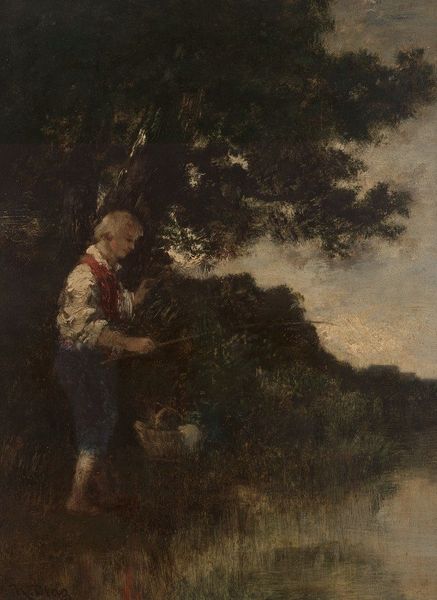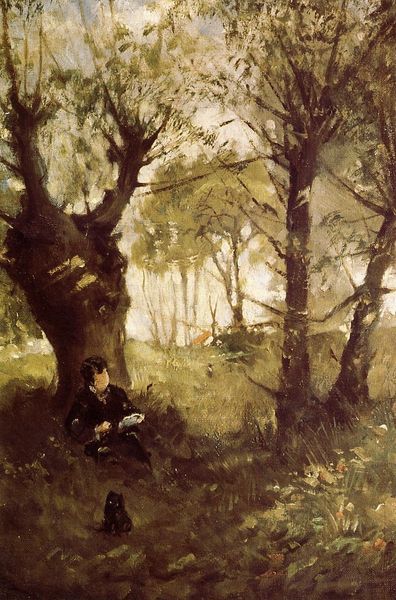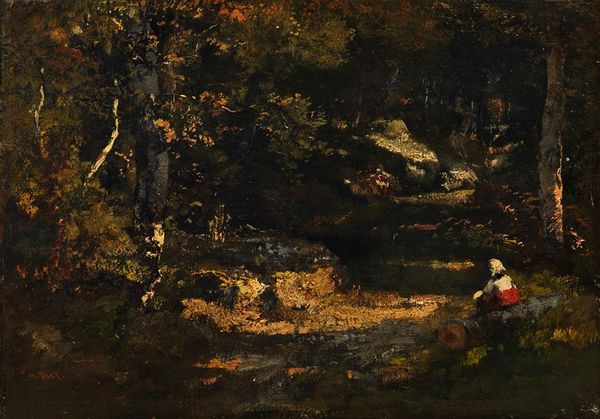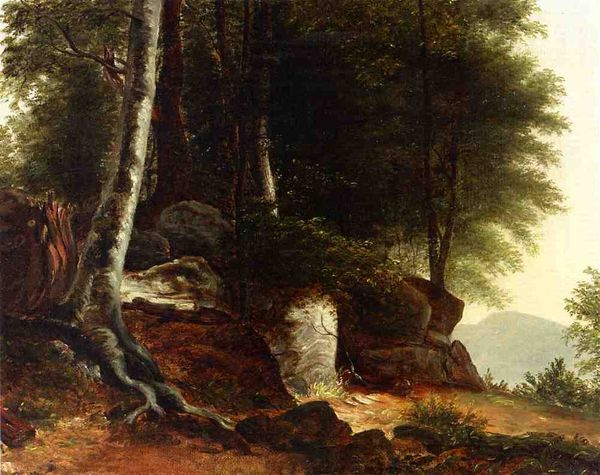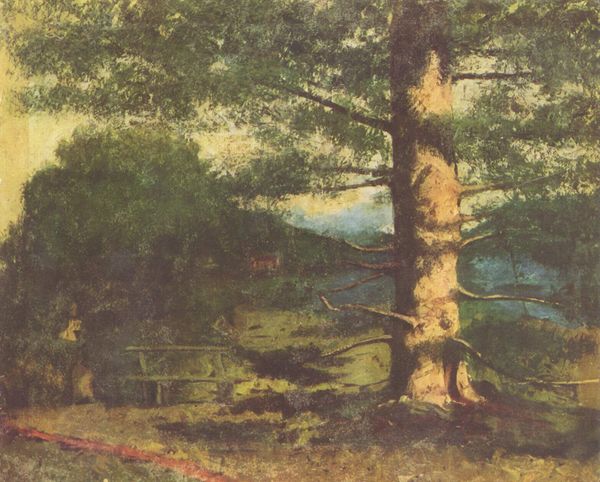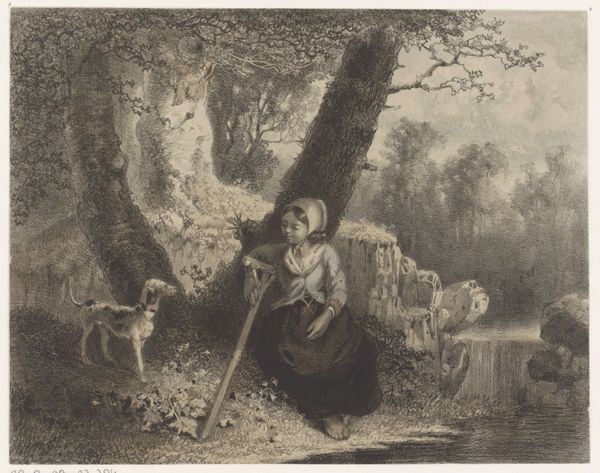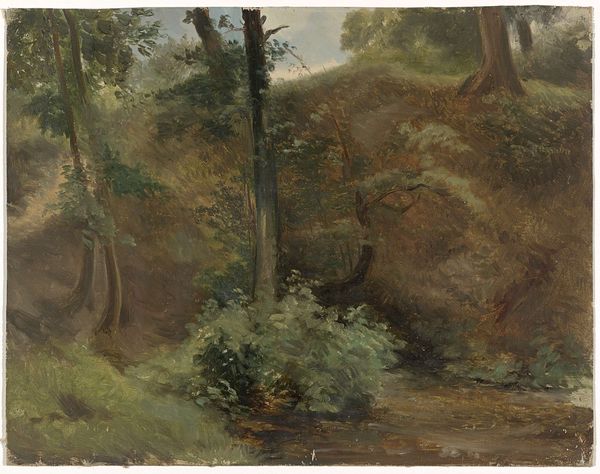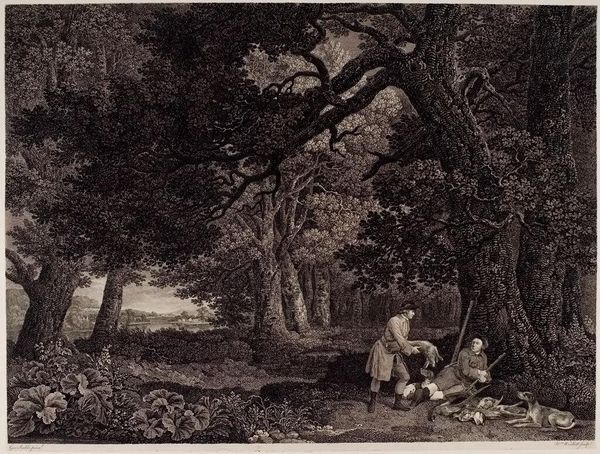
Copyright: Public domain
Editor: This is Johann Koler’s "Girl at the Spring," painted in 1862 using oil paint. The piece has a kind of dark and contemplative mood, with the figure somewhat obscured by shadow. The composition feels quite grounded, emphasizing the connection between the figure and the natural world. What do you see in this work from a formal perspective? Curator: From a formalist lens, I am particularly interested in the interplay of light and shadow. Koler's technique uses darkness not just to conceal, but to enhance the viewer’s focus on the few areas that are illuminated. Notice how the limited light defines the textures of the girl’s clothing and the pottery. Does this deliberate use of contrast impact your perception of depth? Editor: Yes, it makes the immediate foreground feel very present, while pushing the background further away, almost dreamlike. The textures also become much more pronounced, almost tactile. Curator: Exactly. And consider how Koler positions the girl within the landscape. The brushstrokes defining the surrounding foliage are looser and more suggestive than those detailing the girl. This contrast directs our eye and emphasizes her central position and her gesture to the water, the light on the pottery highlighting the focal point. Editor: So, the relationship between the crispness of the figure and the soft haziness of the background is really directing our attention? Curator: Precisely. These compositional choices, alongside the tonal variations within the greens and browns, are critical in understanding the formal underpinnings of the painting. The earthy colors of the figure’s dress blend into the forest as well, which serves as counterpoint to her very defined facial expression and fair skin. The balance of those choices is key here. Editor: That's a fascinating perspective. I was focused on the figure's story, but understanding the formal relationships really opened up another layer of interpretation. Curator: Indeed. By analyzing these intrinsic qualities of form and structure, we are closer to what makes the art endure and resonate.
Comments
No comments
Be the first to comment and join the conversation on the ultimate creative platform.

